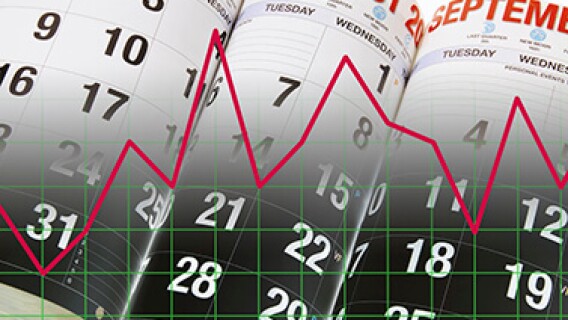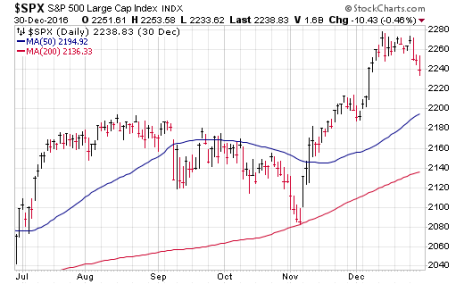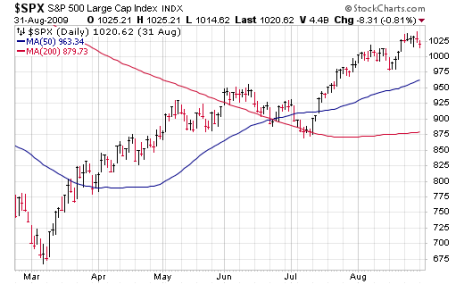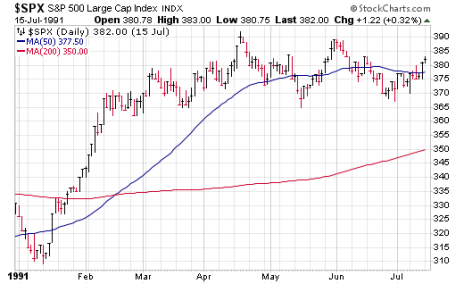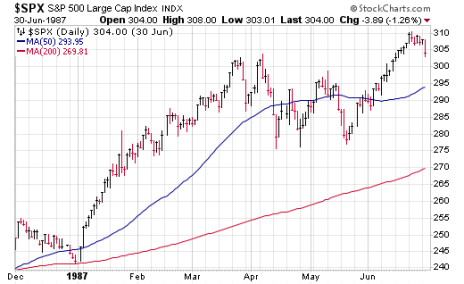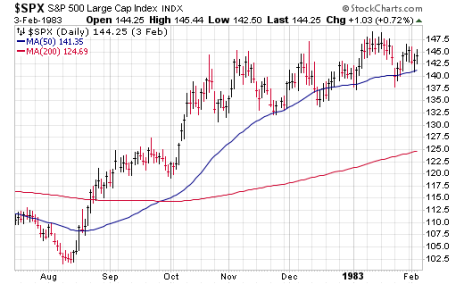Well, after four strong months to start the year, the fifth month of the year has been a relative stinker—the market is working on its fourth straight down week (fifth for the stodgy Dow Industrials), and most major indexes have fallen as much as 5% to 8% from their highs.
With the intermediate-term trend down, I’ve been holding off on most new buying, trimming stocks that have acted abnormally and built up some cash. In the Model Portfolio of my Cabot Growth Investor advisory, we now have 38% sitting on the sideline.
But nobody really cares about the past—what all of us want to know is whether this downturn is (a) near an end or (b) going to lead to a lot more ups and downs or (c) is the start of a new, much longer downturn. Nobody knows for sure, of course, which is why our decisions are mostly based on what actually happens—I follow the trend of the major indexes and action of leading growth stocks.
But as a student of the market, I also look to stock market history for a guide, so today I’m going to walk through the market’s first correction in prior “blastoff” markets since 1980 (so dubbed because all of them featured buy signals from the historically rare and accurate 2-to-1 Blastoff Indicator). Let’s see what conclusions we can draw.




Stock Market History: 2016
In 2016, the 2-to-1 Blastoff Indicator flashed on July 12 after the big Brexit selloff in late June. Usually such a signal leads to a few months of rallying, but that wasn’t the case this time, as presidential election uncertainty took hold. You can see the first correction began in mid August and ran to early November, taking the S&P 500 down 5% in two and a half months, and finding support near the 200-day line (the smooth red line in the chart).
Stock Market History: 2009
The historic 2008-2009 bear market ended in March 2009, and a big sign of that was the quick 2-to-1 signal that year, which flashed on March 23. As is usually the case, the signal led to a great rally for nearly three months before stocks encountered their first meaningful retreat during most of June and early July. This retreat in the S&P 500 was more severe—9.1% from high to low in just a month’s time—but remember the market was crazy-volatile back then. As in 2016, the correction found support at the 200-day line.
Stock Market History: 1991
Following the first Iraq war, the market blasted off and saw a green light from the 2-to-1 indicator on February 5, which was followed by further gains into mid April before the sellers finally did some damage. The overall consolidation lasted about a month and a half and took the S&P down 6.5% at its nadir, before stocks rebounded.
Stock Market History: 1987
Everyone’s heard about the 1987 crash, but few remember that the first eight months of that year were fantastic—the market flashed a 2-to-1 signal on January 14 and stocks rocketed higher through March. Because of that big run, the first dip was relatively sharp: It lasted about two months and took the S&P down 9% at its worst before another big up leg got underway.
Stock Market History: 1982
The massive bull market that began in 1982 also started with a 2-to-1 signal, on August 23. The market had a huge run into late October, and then began to consolidate—you can see that net-net, the S&P didn’t make much progress for a few months, while high to low, the S&P corrected 9%.
Lessons
So what lessons can we learn? One, the first correction after a 2-to-1 blastoff signal tends to be meaningful but not devastating—the shortest was a month long, with the average being around two months (depending on how you measured them). Second, the pullbacks all declined between 5% and 9%, with bigger pullbacks occurring in situations where the 2-to-1 signal led to a big rally.
And third (and not to be forgotten), all of them led to another leg up (or more) in the market after the correction ended.
What’s the point of all this? I like to look at history as a guide to tell me what’s “normal” action—it’s great to have indicators and a view of what could happen, but if the market (or your stocks) go against your views, it’s best to adjust.
Given that we should be in a similar situation to these prior blastoff environments, the past hints that a normal retreat could be one and a half to three months, with a decline into the 2,700 to 2,750 area in the S&P 500. Interestingly, a sustained move below 2,750 would also likely turn my own longer-term trend model (called the Cabot Trend Lines) bearish, which would be another piece of evidence that something is amiss.
Thus, I think the next couple weeks will be key. If history is any guide, the market “should” begin finding support in the not-too-distant future. If not, it would tell us that the current market correction is more severe than those in the past.
However, to this point, despite all the renewed fears of an economic downturn and the trade war, not to mention this week’s political talk (Mueller, etc.), the market’s correction so far hasn’t been out of the ordinary—we’re about four weeks into a decline that’s taken the S&P down as much as 6.3%.
So far, then, the action is normal in the bigger picture. But it’ll pay to watch if that changes.

Learn More

Learn More

Learn More

Learn More
